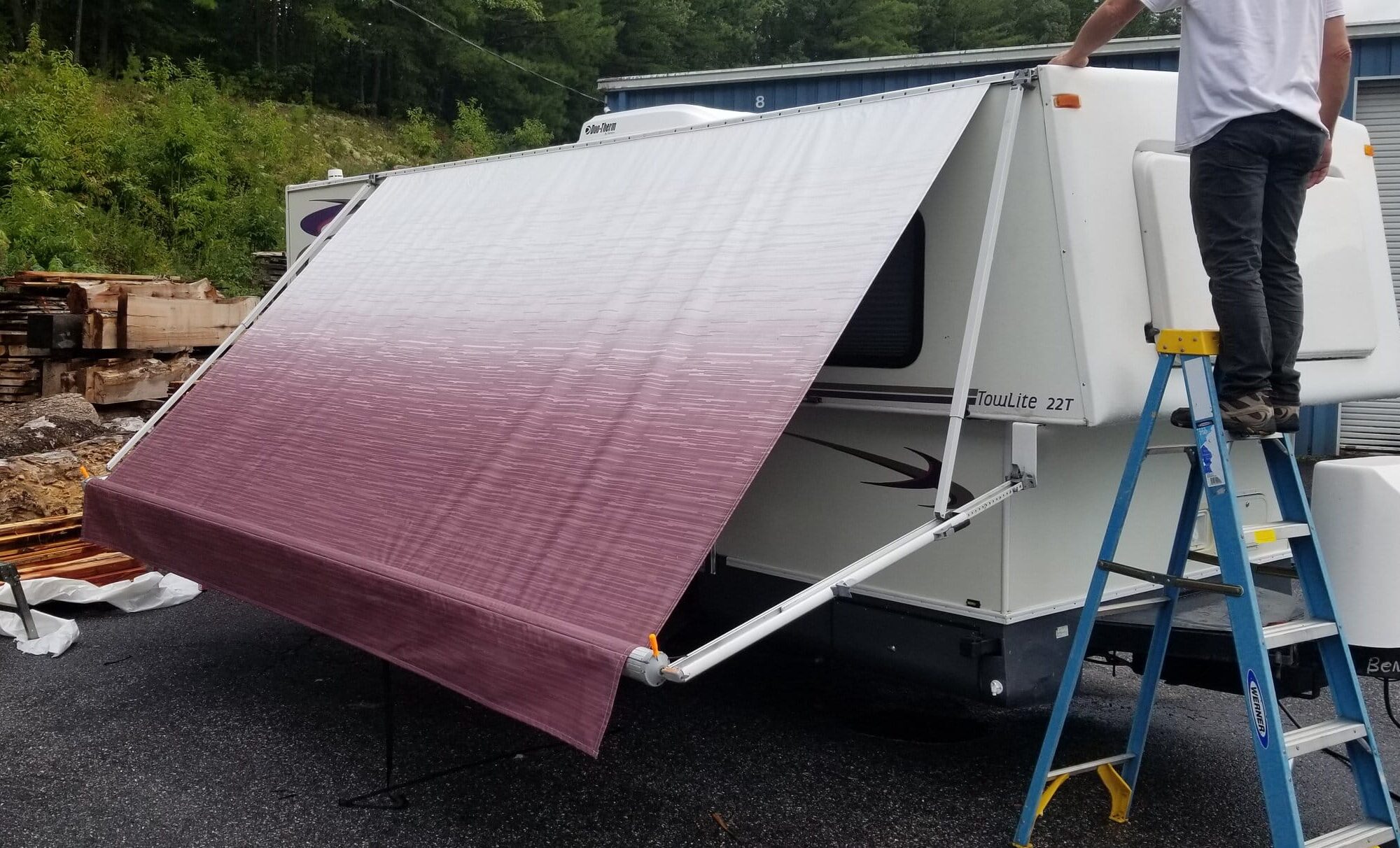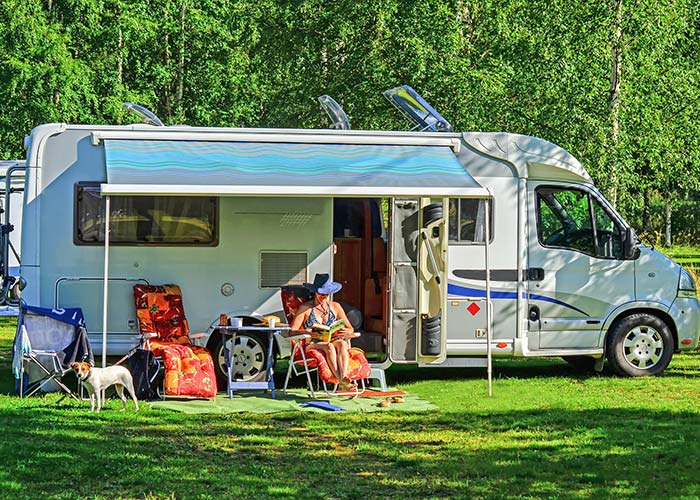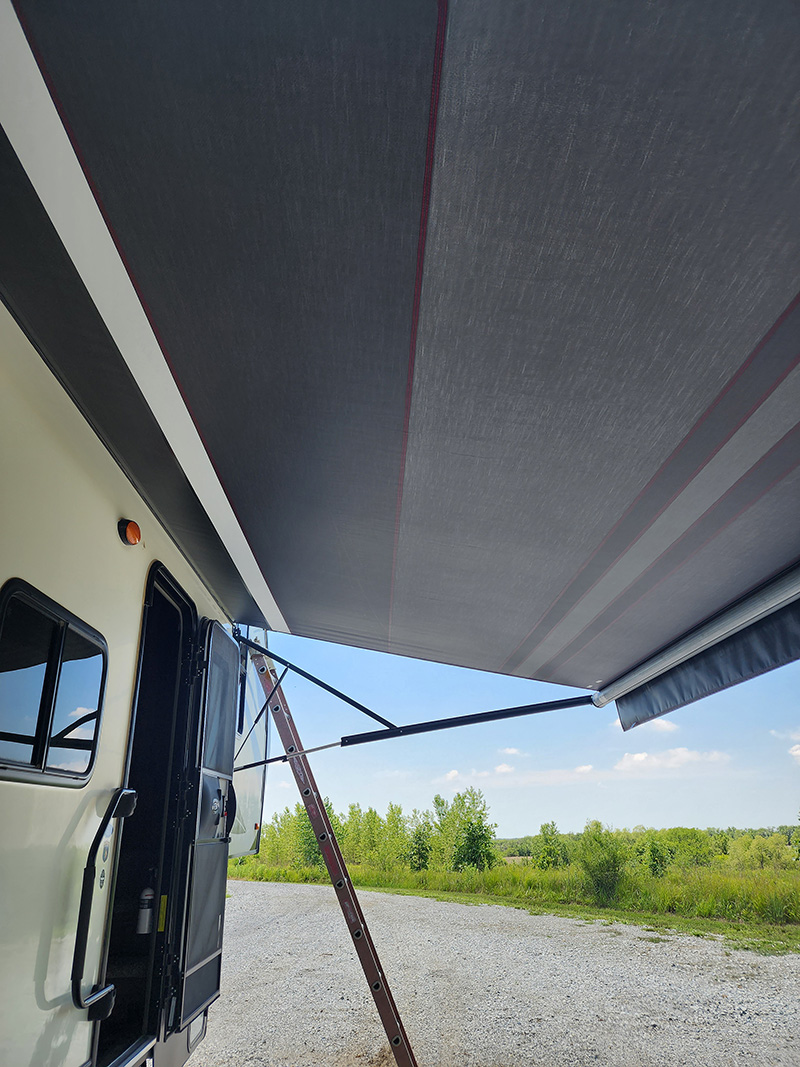All Categories
Featured
Table of Contents
- – Camper Trailer Repair Silverado, CA
- – OCRV Center
- – Camper Air Conditioner Repair Near Me Silverad...
- – Camper Repair Silverado, CA
- – Pop Up Camper Roof Repair Silverado, CA
- – Pop Up Camper Repair Near Me Silverado, CA
- – Pop Up Camper Roof Repair Silverado, CA
- – Camper Repair And Service Silverado, CA
- – Camper Repair Shop Near Me Silverado, CA
- – Rv Camper Ac Repair Silverado, CA
- – Camper Service Near Me Silverado, CA
- – Camper Trailer Service Near Me Silverado, CA
- – Camper Repair Silverado, CA
- – OCRV Center
Camper Trailer Repair Silverado, CA
Most campers around us had their awnings released. We returned home the other day in the rain, so today I deployed the awnings to dry them out.
It shows up that concerning 18 to 24 inches of the metal extrusion (rain gutter) that the awning is glided right into has drawn away from the wall and twisted a bit - Camper Roof Replacement Silverado. I'm presuming the repair will involve changing that entire size of gutter (10 feet?) and most likely using bigger scale screws to replace those that were pulled out
We've obtained broken brackets on our camper awning. 2 months earlier, we had a poor tire blow-out that caused a bent axle, significant repair services, etc, and we ask yourself if the brackets cracked/broke during the bouncy trip before we understood the axle remained in trouble. We have not had the awning out considering that it was in the shop to be fixed.
Camper Air Conditioner Repair Near Me Silverado, CA
The awning itself, spring device, etc, is great. The back brace setting up is fine, yet the front one is broken at the bottom and completely damaged through at the top, so that the leading support arm no much longer fastens to the camper.
Does this sound practical? Also the real assistance arms are undamaged. They are white metal (? light weight aluminum?) and the brackets are a much heavier grey steel - it's the grey bits that have cracked/broken. The actual arms are entirely normal/functionalI'm simply intending to make certain we're not being taken in out of our despair.
Camper Repair Silverado, CA
Are they that brand-specific and proprietary that if one piece is broken it needs to be totally replaced? The motor home is a 2007, however we had rainfall damage in 2010 and the entire awning was new during that time. If nothing else, we would certainly such as suggestions as to just how we can "jerry rig" this for some time - maybe even obtain us through the summer - without needing to place in a brand-new awning! We're in an extremely severe bind since we have a trip planned in mid June that is not optional and can not be altered or postponed.
If we have to go awning-less, we will, yet I prefer to find a fast and reliable solution. Any individual? Please!.
!! I'm on action 5 of replacing the roof of my '93 Fleetwood Jamboree Searcher motorhome. In order to remove the fourth one, I need to get rid of the RV awning.
In order to change the rubber roof and roofing system decking, I need to remove the awning. My RV awning has legs which pivot at the base however can be gotten rid of to set on the ground. First I drew these out. Pushing this bar releases the foot of the awning legs.
Pop Up Camper Roof Repair Silverado, CA
You'll also observe exactly how the brace is hooked on top of the trim molding that holds back the fiberglass panel in the back corner. That's why the awning requires to come off first prior to the last steps of this message (subjecting the front and back sides of the roof covering outdoor decking).
Below's an information of how the awning placing braces are screwed into the camper. I didn't actually need to do this step up until the awning got on the ground but I observed this set screw below holding the awning canvas into the awning rail (there's another at the best end of the awning.) I went in advance and unscrewed it.
Once both screws are removed, merely draw back on the bracket. Unscrewing the big lag screws that hold the motor home awning placing braces to the camper (with a socket wrench) Eliminating the placing brace once the lag screws have been unscrewed. Note just how this end was hooked over the discontinuation bar that secures the rounded corner at the rear of the roof.
Both lag screws gotten rid of from the awning mounting brace on the. Eliminating the mounting bracket of the awning. As soon as the installing braces are removed, it's time to eliminate the awning rail. Remember, the awning rail is generally much like a normal item of aluminum roof edge trim molding except that near the bottom edge there is a circular track with a port in it.
Pop Up Camper Repair Near Me Silverado, CA
To change the roofing, this awning bar needs to be eliminated. Here's a take a look at the round channel at the bottom of the awning rail. The canvas for the awning slides right into this track. Heads up! If you're simply changing your awning and not repairing the whole roof like me, after that you wouldn't require to remove the awning rail.
Going down the legs a few notches to decrease the entire awning. Currently I can reach this trim molding (the awning rail) conveniently. Now it's much like getting rid of the side trim molding on the various other side of the camper. Pull out the vinyl insert that covers the screw heads (you might have to reduce the end with an energy knife if it is put under the rail) and after that simply pull it out.
You might need to reduce the end with an utility blade if it is covered under. Then simply yank it out! When the plastic screw cover insert was out I removed the screws with a cordless drill and the outlet head from my ratchet screwdriver set. This went quite quickly.
Once the screws were out I started prying up the awning rail. Once I began to pry off the awning rail, the whole point instantly broke off and rolled up right into the awning like a window blind.
Pop Up Camper Roof Repair Silverado, CA
Feel in one's bones it's coming! As soon as the screws are eliminated, the awning rail can be pried up. You can see the edge of the rubber roof covering that was secured under it. When you start pulling the awning rail away it will all of a sudden snap complimentary and roll up like a home window blind with the awning.
This thing is heavy so if you're working alone like me after that lower it the ground bit by little by strolling the legs away from the camper on each side one at a time until you can lay it on the ground. I flipped the legs back up and out of the way against the camper.

These screws maintain the awning canvas from sliding in the rail. Once they're eliminated the rail simply slides right off the canvas by sliding the whole rail to one side.
Camper Repair And Service Silverado, CA
As soon as the two set screws were removed I could slide the entire awning rail right off the awning. One more look at the profile of this trim molding (the awning rail) after it was removed.
I tore them out as finest I could. The fiberglass skin over the rounded change had some rustic staples quieting. I tore them out as ideal I could. The next thing holding back the rv fiberglass exterior siding panels is the corner trim molding shown right here. It has a vinyl screw cover strip placed, so again I just pried up the vinyl insert and drew out sufficient so I might unscrew some screw heads.
However I may wind up removing it later on if I require to replace the luan plywood under this fiberglass change. The roof decking plywood extends under the fiberglass skin at the rear of the camper. In order to replace it, this fiberglass transition have to be raised. To raise that, the corner molding should be eliminated.
Then I could turn the trim mold off the side sufficient to lift up the side of the fiberglass panel. Once I can turn that piece of corner molding off the side, I began to pry up the fiberglass panel. It has glue under it and little bits of rusted staples and sheared off screws still holding it in area.
Camper Repair Shop Near Me Silverado, CA
At that factor I switched over from a scrape to 6 inch wide taping blade. I loosened the various other corner trim in the exact same way, and bent it sideways simply enough so that I can raise up the edge of the fiberglass panel.
I located a lot of water damages in the plywood under the fiberglass panel so I'll probably be changing it. Which implies I'll finish removing those edge trim pieces all the means down. We'll obtain to that later on. I had a considerable quantity of water damage in the joint in between the rounded edge and the roofing deck.
Rv Camper Ac Repair Silverado, CA
It's simply standing out through the staples. Ultimately the edge of the roofing decking is subjected at the rear of the camper! OK! So I've subjected the roof covering substratum at the back side of the camper. Now its time to find the front side. Same bargain again. Eliminate some screws from the edge trim holding down the fiberglass panel.
Once again, I pried that layer up too (there had not been much stifling however glue at this factor) and afterwards I might yank out the remainder of the rubber roof that was glued below it. Now I can take out the last little bit of rubber roof covering from underneath the fiberglass and luan plywood.
Camper Service Near Me Silverado, CA
I saw there were no fasteners holding the roofing system plywood down. I could see the blue styrofoam insulation below the damaged areas of luan plywood on the roof. Notice there are no bolts at all holding down the roofing system plywood!
When I scraped up some of the broken little bits I obtained hold of a strong item of plywood and began to pull. The whole point began to draw up cleanly in one piece without damaging the foam board insulation at all.
There is a steel strengthened tape on the bottom that signs up with the assemble. I don't recognize exactly how specifically they took care of to glue whatever down so well and get this tape joining them from the bottom, however it was perfectly done. The items of roof covering ply are collaborated at the seams below with a metal-reinforced tape.
Camper Trailer Service Near Me Silverado, CA
I swiftly realized the roofing was shedding strength and rigidity as I brought up the leading layer, so cracked it off right before the first joint. A close of the steel framework in the roofing system: one inch wide, one and a half inches high. Here's a detail of the electrical wiring in the insulation foam and the strong wood supports where the antennas screw right into the roof covering.

I found a bunch of water damage in the plywood under the fiberglass panel so I'll probably be replacing it. I had a significant amount of water damage in the joint between the rounded edge and the roof deck.
It's simply popping via the staples. Ultimately the edge of the roofing system outdoor decking is revealed at the back of the camper! OK! I have actually exposed the roofing substrate at the back side of the camper. Now its time to discover the front edge. Very same offer once more. Eliminate some screws from the corner trim holding down the fiberglass panel.
Once more, I tore that layer up also (there had not been much stifling yet adhesive at this moment) and then I can tug out the rest of the rubber roof covering that was glued below it. Camper Roof Replacement Silverado. Now I can take out the last little bit of rubber roof covering from beneath the fiberglass and luan plywood
Camper Repair Silverado, CA

I saw there were no bolts holding the roof plywood down. I might see the blue styrofoam insulation below the damaged areas of luan plywood on the roofing system. Notification there are no bolts at all holding down the roof plywood!
As soon as I scuffed up some of the damaged bits I got hold of a strong piece of plywood and began to draw. The entire point started to pull up cleanly in one item without harming the foam board insulation at all.
There is a metal strengthened tape on the base that signs up with the items together. I do not understand how exactly they managed to adhesive everything down so well and get this tape joining them from the bottom, however it was perfectly done. The pieces of roofing ply are joined together at the seams underneath with a metal-reinforced tape.
I swiftly realized the roof covering was losing stamina and tightness as I brought up the leading layer, so split it off prior to the initial seam. A close up of the steel framework in the roof covering: one inch wide, one and a half inches high. Right here's a detail of the wiring in the insulation foam and the strong wood reinforcements where the antennas screw right into the roof.
Rv Camper Repair Near Me Silverado, CACamper Roof Repair Silverado, CA
Camper Roof Repair Near Me Silverado, CA
Camper Service Silverado, CA
Camper Trailer Service Near Me Silverado, CA
Pop Up Camper Repair Silverado, CA
Pop Up Camper Repair Near Me Silverado, CA
Rv Camper Repair Silverado, CA
Camper Trailer Repair Silverado, CA
Camper Service Silverado, CA
Camper Repair Silverado, CA
Pop Up Camper Canvas Repair Silverado, CA
Camper Repair Places Near Me Silverado, CA
Rv Camper Repair Silverado, CA
Camper Repair Silverado, CA
Camper Trailer Service Near Me Silverado, CA
Pop Up Camper Roof Repair Silverado, CA
Camping Repair Near Me Silverado, CA
Camper Service Center Silverado, CA
Camper Trailer Repair Silverado, CA
Camper Repair Silverado, CA
Pop Up Camper Canvas Repair Silverado, CA
Camper Service And Repair Silverado, CA
Pop Up Camper Canvas Repair Silverado, CA
Rv Camper Repair Silverado, CA
Camper Roof Repair Near Me Silverado, CA
Camper Repair Shop Near Me Silverado, CA
Camper Roof Replacement Silverado, CA
Pop Up Camper Repair Silverado, CA
Pop Up Camper Canvas Repair Silverado, CA
Camper Service Silverado, CA
Camper Trailer Service Near Me Silverado, CA
Camping Repair Near Me Silverado, CA
Camper Repair Shops Near Me Silverado, CA
Camper Services Silverado, CA
Camper Service Center Silverado, CA
Camper Roof Replacement Silverado, CA
Camper Repair Shops Near Me Silverado, CA
Camper Service Silverado, CA
Camper Trailer Repair Near Me Silverado, CA
Camper Repair Shop Silverado, CA
Camper Service And Repair Silverado, CA
Camper Services Silverado, CA
Camper Roof Repair Near Me Silverado, CA
Camper Repair Shop Near Me Silverado, CA
Rv Camper Ac Repair Silverado, CA
Camper Repair And Service Silverado, CA
Camper Repair Silverado, CA
Camper Roof Replacement Silverado, CA
Camper Trailer Repair Silverado, CA
Pop Up Camper Repair Near Me Silverado, CA
Camper Repair Places Near Me Silverado, CA
Camper Air Conditioner Repair Near Me Silverado, CA
Rv Camper Ac Repair Silverado, CA
Camper Roof Repair Silverado, CA
Rv Camper Ac Repair Silverado, CA
Camping Repair Near Me Silverado, CA
Camper Service Silverado, CA
Camper Air Conditioner Repair Near Me Silverado, CA
Camper Service And Repair Silverado, CA
Camper Repair And Service Silverado, CA
Camper Trailer Repair Near Me Silverado, CA
Camper Air Conditioner Repair Near Me Silverado, CA
Camping Repair Near Me Silverado, CA
Camper Services Silverado, CA
Camper Trailer Repair Silverado, CA
Rv Camper Repair Near Me Silverado, CA
Camper Trailer Repair Near Me Silverado, CA
Camper Awning Replacement Silverado, CA
Camper Repair Near Me Silverado, CA
Camper Service Silverado, CA
Pop Up Camper Repair Silverado, CA
Camper Trailer Service Near Me Silverado, CA
Camper Service Silverado, CA
Camper Service Silverado, CA
Rv Camper Ac Repair Silverado, CA
Rv Camper Repair Silverado, CA
Camper Trailer Service Near Me Silverado, CA
Finding A Seo Pricing Silverado, CA
Close To Seo For Law Firms Silverado, CA
OCRV Center
Table of Contents
- – Camper Trailer Repair Silverado, CA
- – OCRV Center
- – Camper Air Conditioner Repair Near Me Silverad...
- – Camper Repair Silverado, CA
- – Pop Up Camper Roof Repair Silverado, CA
- – Pop Up Camper Repair Near Me Silverado, CA
- – Pop Up Camper Roof Repair Silverado, CA
- – Camper Repair And Service Silverado, CA
- – Camper Repair Shop Near Me Silverado, CA
- – Rv Camper Ac Repair Silverado, CA
- – Camper Service Near Me Silverado, CA
- – Camper Trailer Service Near Me Silverado, CA
- – Camper Repair Silverado, CA
- – OCRV Center
Latest Posts
Air Condition Service Van Nuys
Swamp Cooler Repair La Crescenta
Montrose Swamp Cooler Repair
More
Latest Posts
Air Condition Service Van Nuys
Swamp Cooler Repair La Crescenta
Montrose Swamp Cooler Repair